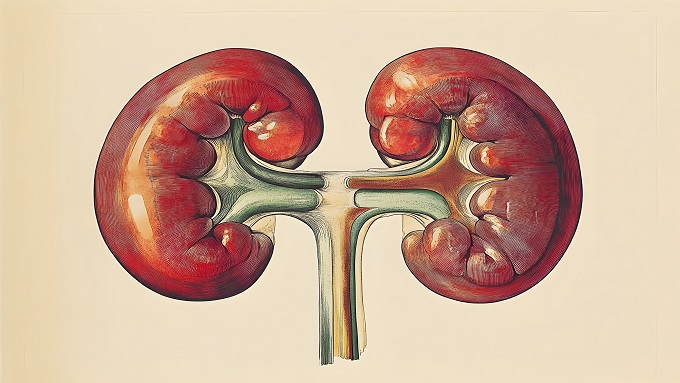Accreditation Number: 10/C/C3/DT.05.00/2025
Submissions
Submission Preparation Checklist
As part of the submission process, authors are required to check off their submission's compliance with all of the following items, and submissions may be returned to authors that do not adhere to these guidelines.Author Guidelines
This section is further detailed in the template and must be followed by all authors accordingly. The guidelines can be downloaded here.
GUIDELINES FOR AUTHORS OF MAJALAH BIOMORFOLOGI
(BIOMORPHOLOGY JOURNAL-MBIOMJ)
Majalah Biomorfologi (Biomorphology Journal-MBIOMJ) is published twice a year in one volume. Manuscripts submitted must contain original ideas that have never been published or presented in any form and anywhere and not in a review or under consideration to be published by other parties. This journal accepts manuscripts in American-English with proper grammar. The use of grammar-checker applications is mandatory for any non-native authors. The manuscript should be written by the structure as in the Document Template. The Document Template includes an Author's Declaration form that the manuscript does not contain fabricated, falsified, and plagiarized text and/or data, that the manuscript has never been published before and is not under consideration for publication by another party, and that all authors have agreed on the final form of the manuscript. All authors involved in making the manuscript must sign the statement sheet outlined by ICMJE. The authors should also attach ethical eligibility (ethical clearance) for original research from their institution or local authority the Patient Consent for Publication form for the case study or case series; and also the Title Page as well as the Cover Letter. All authors are obliged to follow Guideline for Author, the Submission Checklist, and to sign the Authors' Declaration form. The author(s) cannot withdraw any submitted manuscript that has been sent to the peer reviewers.
The manuscript must be free of typing errors and have a proportional length. The length of each manuscript is 5-10 pages of A4 size paper (1.5 spaces, Times New Roman font size 11, with normal margins page layout of 2.54 cm on each side). The recommended references are the updated ones in the last ten (10) years from the date of current submission (minimum of 20 references), unless in a special case accepted by the editors due to scientific reasons.
Total number of tables and figures should be limited, advisably no more than five. Tables should be numbered with Arabic numbers. The title of each table should be written center-aligned at the top of the table, in normal Times New Roman, font size 11, ended with period (.). Text within tables should be written in 1 space, normal Times New Roman font size 9 or less. Figures (including graphs, diagrams, charts, drawings, and photographs) should be produced at least 300 dpi in jpg, jpeg, or png format, have clear legends, numbered with Arabic numerals, and the title of each figure should be written center-aligned at the bottom of the figure, in normal Times New Roman, font size 11, ended with period (.). All words in Latin must be written in italics. The use of abbreviations is generally agreed upon, and an extension must be given in the first mention of the abbreviation. Decimal numbers are marked with points (.).
All types of manuscripts must consist of:
- Title, which must be concise, specific, and informative. The title must consist of no more than 30 words, written on the top line with bold Times New Roman font size 13, center-aligned, and the first letter of each word in the title is capitalized, except for articles and conjunctions. Latin name is italicized (italic).
- The author's names are complete (without title) and the home institutions of the authors are written with an initial capital letter for each word in Times New Roman font, size 11, center-aligned, without ending points. The names of the authors are separated by commas. Numeric code in superscript is added behind each author's name. The author's home institution is written under the author's name beginning with a numeric code (superscript). The name of the institution is followed by the name of the city and the country where the institution is located. At least one of the authors is required to add their ORCID IDs listed on https://orcid.org/ (see template). The link should be embedded on the ORCID logo after the authors' names. At least 1 of the authors must include external (more than one, if necessary) affiliation(s) outside the MBIOMJ publisher (please see the published articles in our archives).
- Abstract must be arranged with a brief description (containing no more than 250 words). The abstract is written in English.
- abstract of original research report, systematic review and/ or meta-analysis, and scoping review must consist of background, objective, material and method, result, and conclusion written in one paragraph.
- abstract of case series and scoping review discussion must consist of background, objective, case(s), scoping review, discussion, and conclusion, written in one paragraph.
- Keywords, consist of 3-5 words and/or phrases, written on the left side of the abstract as seen in the template, in English, started with a capital letter (sentence case), and without an ending point. The keywords must contain at least one keyword of Sustainable Development Goals (SDGs).
- Running title (short version of full title or abbreviated title) that must be written as a header of the manuscript on the right side.
- Correspondence is written under the abstract including the name, full address, and email address of one of the authors responsible as corresponding author.
- Highlights of the manuscript, which consist of minimally two keypoints representing the novel contributions of the study and must not be the copy-paste and/or repetition of sentences of any other parts of the manuscript. These highlights should be written before the background using number bullets (see template).
The sections according to each type of manuscript are as follows:
a. Original Research Report consists of the following sections:
Background
Objective
Material and Method
Result
Discussion
Strength and limitations
Conclusion
Acknowledgment
Conflict of interest
Ethic Consideration
Funding
Author Contribution
Data Availability
b. Systematic Review and/ or Meta-Analysis consists of the following sections:
Background
Objective
Material and Method
Result
Discussion
Strength and limitations
Conclusion
Acknowledgment
Conflict of interest
Funding
Author Contribution
Data Availability
c. Scoping Review consists of the following sections:
Background
Objective
Material and Method
Result
Discussion
Strength and limitations
Conclusion
Acknowledgment
Conflict of interest
Funding
Author Contribution
Data Availability
d. Case Series with Scoping Review Discussion consists of the following sections:
Background
Objective
Case(s)
Scoping review
Discussion
Strength and limitations
Conclusion
Acknowledgment
Conflict of interest
Patient Consent for Publication
Funding
Author Contribution
Data Availability
REFERENCES
All references in each manuscript MUST be published within 10 years from the submission date, with minimum of 20 references, and whilst these references should be from highly reputable publishers and/or indexing websites i.e. Scopus, Scimagojr, Web of Science, NCBI- Pubmed, and Google Scholar. A citation must be done accordingly to all references in each article. The references follow Harvard referencing style:
1. Journal
The first author's last name, initials. The second author's last name, initials. etc., Year. Article title (Sentence case). Journal Name (each word starts with a capital letter), Volume (No): page.
a. Six authors or less
Boughton, J.M., 2002. The Bretton Woods proposal: an in-depth look. Political Science Quarterly, 42(6): 305-311.
Breslavsky, A. Frand, J. Matas, Z. Boaz, M. Barnea, Z. Shargorodsky, M., 2013. Effect of high doses of vitamin D on arterial properties, adiponectin, leptin, and glucose homeostasis in type 2 diabetic patients. Clinical Nutrition, 32(6): 970-975.
Manna, P. & Jain, S.K., 2012. Vitamin D upregulates glucose transporter 4 (GLUT4) translocation and glucose utilization mediated by cystathionine-γ-lyase (CSE) activation and H2S formation in 3T3L1 adipocytes. J Biol Chem, 287(50): 42324-42332.
b. More than six authors
Biino, G. Santimone, I. Mineli, C. Sorice, R. Frongia, B. Traglia, M. 2013. Age and sex-related variations in platelet count in Italy: A proposal of reference ranges based on 40987 subjects' data. PLoS ONE, 8(1): e54289.
2. Books
Last name, initials., Year. Book title. Edition City of publisher: publisher.
Barker, R. Kirk, J. Munday, R.J., 1988. Narrative analysis. 3rd ed. Bloomington: Indiana University Press.
a. Edited book/chapter of an edited book
The last name of the chapter writer, initials. ed/eds., Chapter year. Chapter Title. In: Editor's name (Initial first name. Last name, ed.)ed/eds. Book year. Book title. City of publisher: Publisher. Chapter or page number.
Keene, E. ed., 1988. Natural language. Cambridge: University of Cambridge Press.
Neurology. Teterboro, New Jersey: Icon Learning Systems. 264-280.
Oster, J.M. Gutrecht, J.A. Gross, P.T., 2005. Epilepsy and syncope. In: H. Royden Jones, ed. Netter's Samson, C., 1970. Problems of information studies in history. In: S. Stone, ed. 1980. Humanities information research. Sheffield: CRUS, 44-68.
b. Translated book
Last name, initials., Year. Book title. Translated from (language) by(Translator's initial first name, last name). City of publisher: Publisher.
Fawcet, D.W., 1994. Buku ajar histologi. Translated from English by J. Tambayong. Jakarta: Penerbit Buku Kedokteran EGC.
c. Electronic book/E-book
Last name, initials., Year. Book title. [e-book] City of publisher: Publisher. Retrieved: (date of access) of (website address).
Fishman, R., 2005. The rise and fall of suburbia. [e-book] Chester: Castle Press. Downloaded 12 May 2010 from http://libweb.anglia.ac.uk.
d. Proceeding book
Last name, initials. Year. Article title. In: Editor's name, ed or organization's name. Book Title. Location, Date. Place of publisher: Publisher. Date. Place of publisher: Publisher.
Artaria, M.D. Rahmawati, Y. Setianingsih, H., 2012. Variasi genetika lokus STR codis (THO1, TPOX) pada temuan rangka prasejarah dari Gilimanuk. In: N.M. Karmaya, I.W. Sugiritama, eds. Proceeding of Pertemuan Ilmiah Nasional Perhimpunan Ahli Anatomi Indonesia XIII. Bali, Indonesia, 12-13 Oktober 2012. Denpasar: Udayana University Press.
e. Thesis/dissertation
Last name, initials. Year of publication. Thesis/dissertation title. Categories (undergraduate thesis/thesis/dissertation/research report). City of publisher: University name.
Richmond, J., 2005. Customer expectations in the world of electronic banking: a case study of the Bank of Britain. Dissertation. Chelmsford: Anglia Ruskin University.
f. Website
Author/institution, Year. Title of writing. Retrieved: (date of access) of (website address).
National Electronic Library for Health, 2003. Can walking make you slimmer and healthier? Downloaded 10 April 2005 from http://www.nhs.uk.hth.walking.
CITATION WRITING
The citation in the article must be written as follows:
a. If there are more than 2 authors in one article:
.... in accordance with the results of the study (Titus, et al., 2007).
b. Two authors in one article:
Recent research (White & Brown, 2004) shows that ...
c. If it consists of one or more articles:
.... in doing deeper research (Pinzon, 2007).
... below the level of the lesion (Liporace, 2006; Snell, 2002).
... spondylosis, as well as vascular tumors (Lindsay, et al., 2004; Titus, et al., 2007).
Copyright Notice
1. The journal allows the author(s) to hold the copyright of the article without restrictions.
2. The journal allows the author(s) to retain publishing rights without restrictions.
3. The legal formal aspect of journal publication accessibility refers to Creative Commons Attribution 4.0 International License (CC-BY).
































